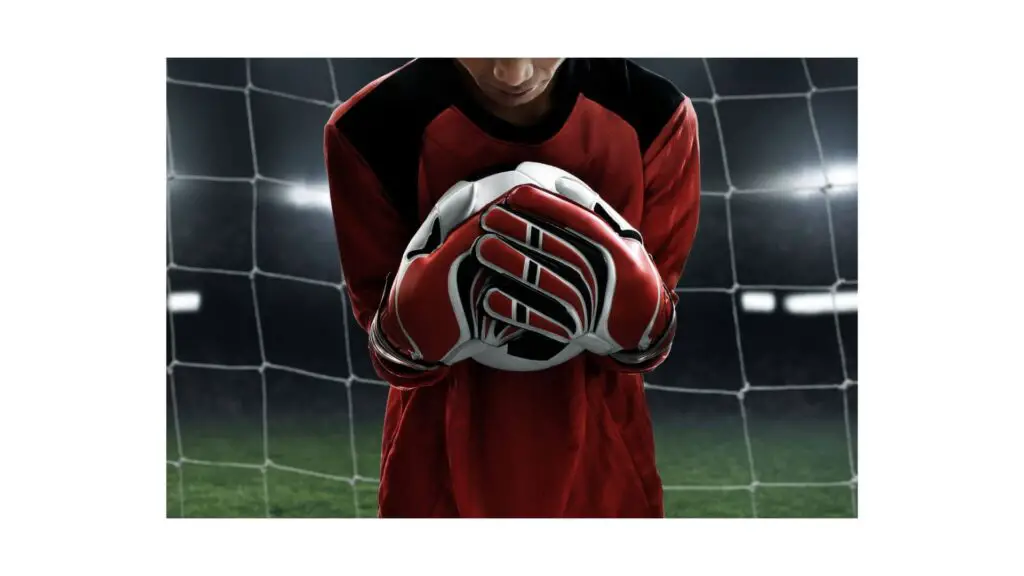The role of the goalie is to protect the goal and prevent the opposing team from scoring. As such, the rules surrounding the goalie and the area in which they operate, known as the goalie box, are of great importance.
In this article, you’ll learn everything there is to know about the goalkeeper box rules in soccer.
Let’s get started.
What are The Soccer Goalie Box Rules?
Here are the four main goalie box rules in soccer:
- The size of the goalie box
- Handling the ball within the goalie box
- The six-second rule
- Goalies cannot pick up back-to-back throw-ins
1-The Size Of The Goalie Box
The first rule to understand is the size of the goalie box.
According to FIFA, the international governing body of soccer, the goalie box is defined as an area measuring 18 yards wide and 5 yards deep. It is located in front of the goal, with the back line of the box being parallel to the goal line.
This area is where the goalie is allowed to handle the ball, and it is also where they are protected from being tackled by opposing players.
Yes, that’s right, Referees protect goalkeepers.
Every time the goalie jumps to catch a long ball, and there is contact with an opposing player, a foul will be given to the goalie.
So, the rule is simple, do not touch the goalkeeper inside the penalty area.
2-Handling The Ball Within The Goalie Box
The second rule to understand is that the goalie is the only player who is allowed to handle the ball within the box.

In most cases, if any other player on the field, including those on the goalie’s team, touches the ball with their hands or arms inside the box, it results in a penalty kick for the opposing team.
The exception to this rule is when the ball is deliberately kicked to a player on the same team by another player or if the ball comes into the box as a result of a rebound off the goalpost or crossbar.
3-The Six-Second Rule
The third rule is that the goalie must release the ball into play within six seconds of picking it up.
This is known as the “six-second rule” and is in place to prevent goalies from holding onto the ball for too long and slowing down the pace of the game.
If a goalie takes longer than six seconds to release the ball, the opposing team is awarded an indirect free kick from the spot where the goalie touched the ball.
4-The Goalie Cannot Pick Up Back-To-Back Throw-Ins
The last rule is that the goalkeeper is not allowed to pick up back-to-back throw-ins.
This means that if the opposing team makes a throw-in, the goalie cannot pick up the ball if it is thrown directly to them.
This rule is in place to prevent goalies from gaining an unfair advantage by constantly being able to pick up the ball and release it into play quickly.
Role Of The Referee
Finally, it’s important to note that the rules surrounding the goalie and the penalty box are subject to interpretation by the referee.
The referee has the final say on any decision involving the goalie and the box area. This includes determining if a handball occurred inside the box or if a goalie has taken too long to release the ball.
==>>You can also read my full article about the rules of soccer simplified here.
Wrap Up
In summary, the rules surrounding the goalie and the box in soccer are critical for maintaining the integrity of the game.
The size of the box, the fact that only the goalie can handle the ball within it, the six-second rule, the rule that the goalie cannot leave the box without the ball, the rule that the goalie cannot pick up back-to-back throw-ins, and the role of the referee in interpreting these rules all contribute to making the game fair and exciting for players and fans alike.
As a goalie, it is important to understand and abide by these rules to ensure that you are playing the game correctly and helping your team to succeed.
Hope you have gained value from this article.
You can also read: Why is there a goalie box in soccer?
You can contact me via contact@soccerfolders.com for anything related to soccer.

